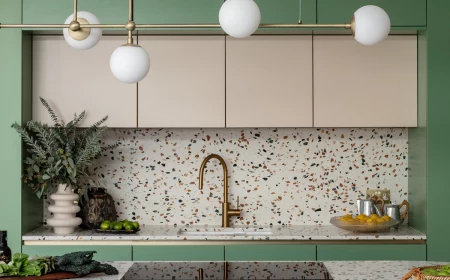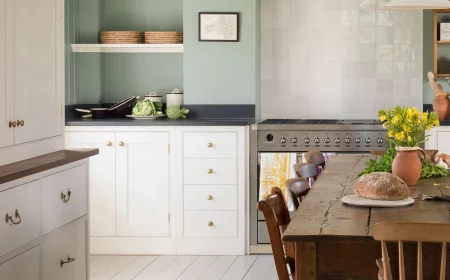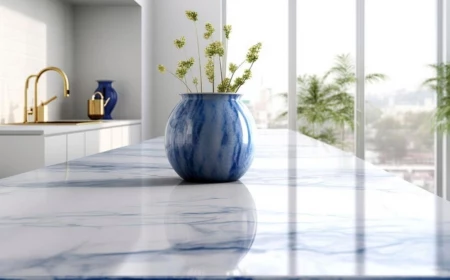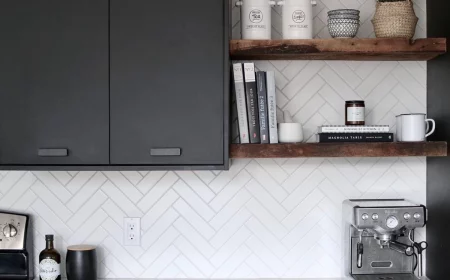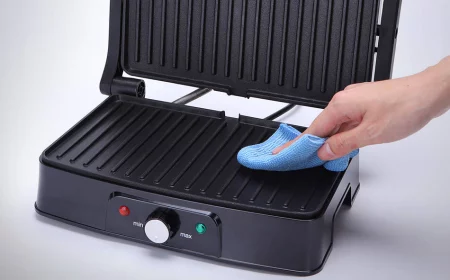An Insider’s Guide to Choosing Kitchen Countertops: The Honest Truth
I’ve spent a couple of decades deep in the world of stone and kitchens. My journey started in a dusty fabrication shop, learning the old-school way of cutting and polishing stone by hand. Now, I spend my days helping people like you make a decision they’ll live with for a very long time. And after all these years, one thing is crystal clear: the best kitchen countertop isn’t the most expensive one or the trendiest one. It’s the one that actually fits how you live your life.
In this article
Let’s be real, a new countertop is a major investment. This is the main work surface of your home. It’s where you’ll chop veggies, roll out holiday cookie dough, and inevitably spill coffee. Trends are fun, but they fade. A durable, smart surface choice is forever. So many people fall for the showroom look and forget to ask about the day-to-day reality, a mistake that I’ve seen lead to a ton of frustration down the road.
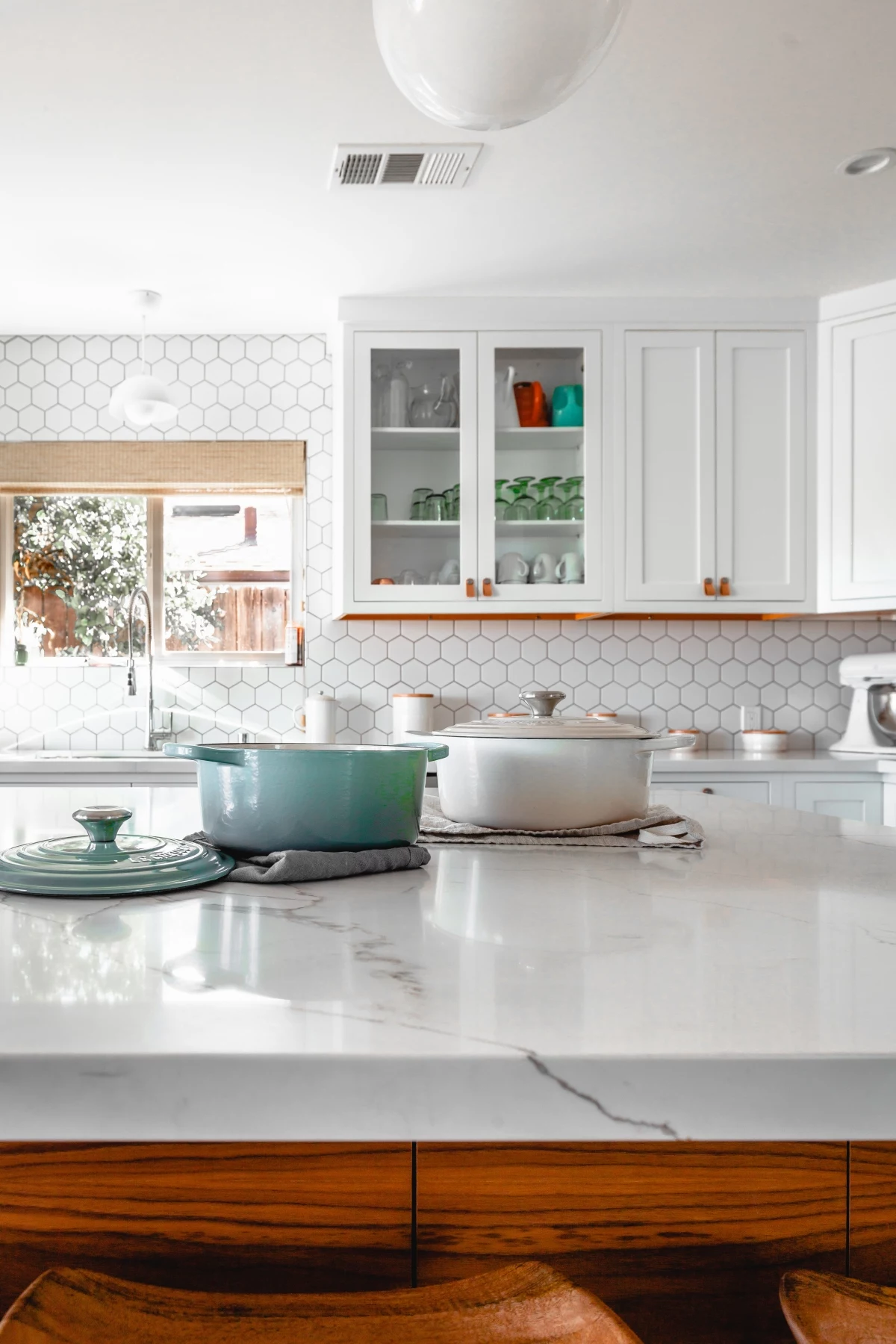
So, think of this as the same candid chat I have with my own clients. We’re going to look past the perfect shine and get into the nitty-gritty of the most popular materials out there.
1. Granite: The Reliable Workhorse
For a long time, granite was the king of the countertop world, and for very good reason. It’s this incredible blend of natural, one-of-a-kind beauty and serious, rugged performance. It’s a forgiving choice for anyone who actually uses their kitchen a lot.
The Nitty-Gritty on Granite’s Strength
Granite is an igneous rock, which basically means it was born from super-hot magma that cooled down slowly deep inside the Earth. That slow cooling is what allowed big, tough crystals of quartz and feldspar to form. This gives granite its signature speckled appearance and its impressive hardness. On the Mohs hardness scale (from 1 to 10), granite usually lands between a 6 and 7. Your kitchen knife is about a 5.5, which means granite is highly resistant to scratches from everyday use. It’s also great with heat. You can set a hot pan on most granites without a problem, though, as a pro, I’ll always tell you to use a trivet. Better safe than sorry, and it avoids any risk of thermal shock, which can happen with any stone.
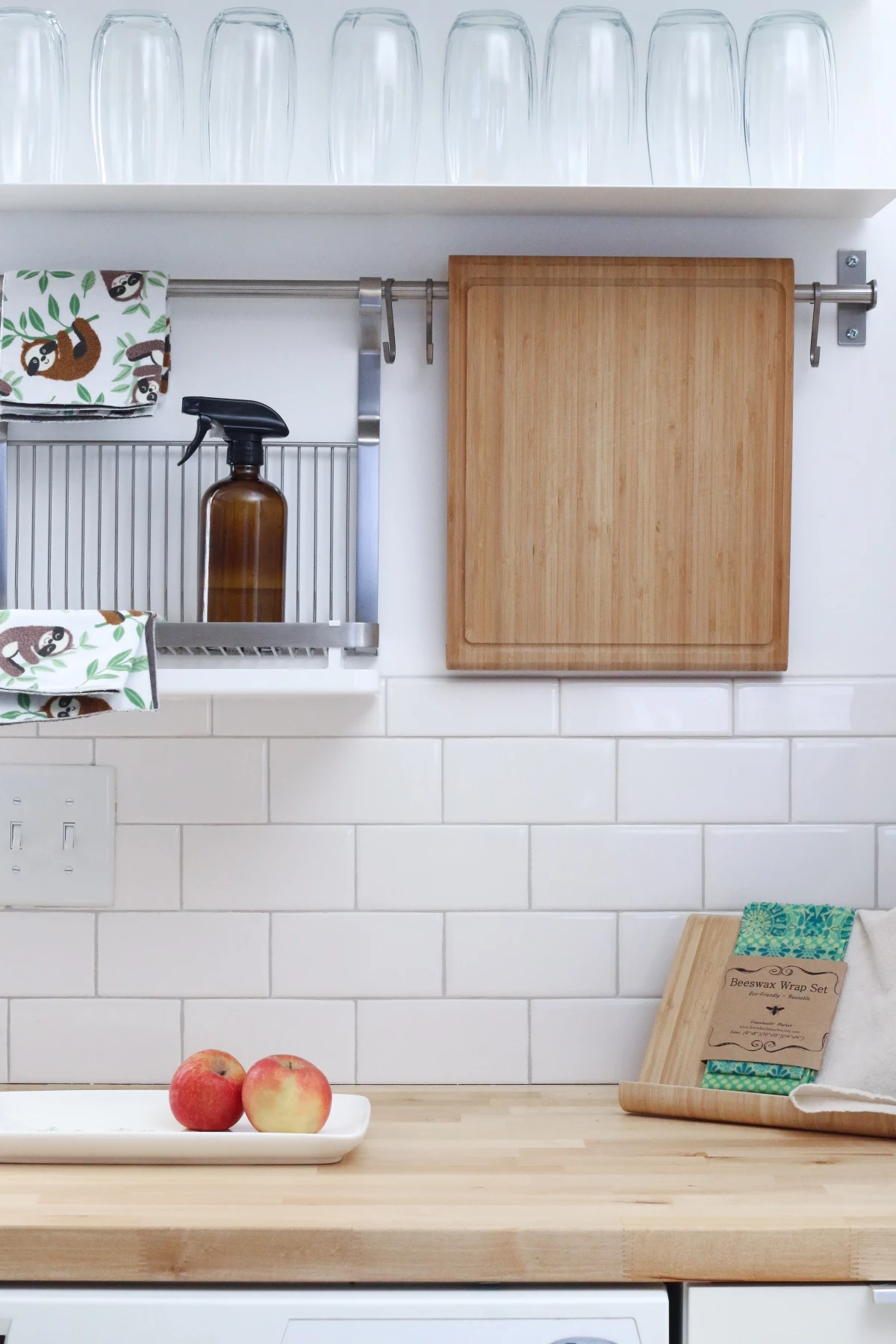
Living With Granite: The Real Deal
Okay, so what’s the catch? Maintenance. Granite is porous, which is a fancy way of saying it has microscopic holes that can soak up liquids. If your countertop isn’t sealed properly, it can stain from things like oil, red wine, or even a puddle of water left too long.
Quick Tip: Do the water test. Just leave a small puddle of water on your counter for a few minutes. If the water beads up nicely, your sealer is doing its job. If the stone darkens and soaks the water in, it’s time to reseal. Depending on the specific stone and your usage, this might be once a year or every five years. It’s a simple DIY job that takes less than an hour.
When it comes to cleaning, just use warm water and a drop of pH-neutral soap. Never use acidic stuff like vinegar or lemon juice on it—that’ll just eat away at your sealer. As for sealing, I usually recommend products like Tenax or Dry-Treat to my clients. You can find them online or at specialty tile shops.
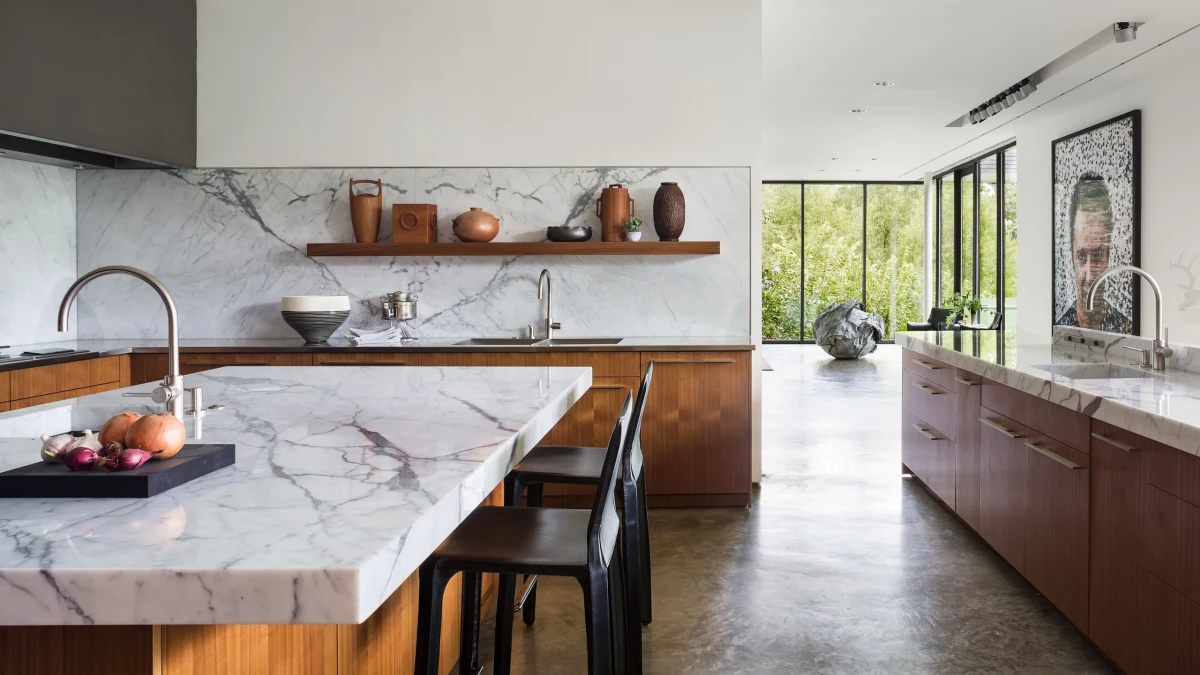
What About Damage and Cost?
What if you get a chip? First, don’t panic. A good fabricator can often repair small chips, especially in a stone with a busy pattern, using a color-matched epoxy. When it’s done right, you’d be hard-pressed to even find the spot. It’s a very common fix.
And the big question: cost. Granite has a surprisingly wide price range. You can find more common patterns starting around $40-$60 per square foot installed. For more exotic slabs with dramatic veining, you could be looking at $100 per square foot or more.
- Best for: Busy families, passionate home cooks, and anyone who wants a durable, natural surface with a classic look.
- Worst for: Someone who wants a perfectly uniform, solid color pattern (that’s quartz territory).
2. Marble: The Timeless, Living Surface
Honestly, nothing beats the elegant, luminous look of marble. It has a softness that no other stone can quite capture. But I’m always very direct with clients interested in marble. I tell them, “You don’t just own a marble countertop; you enter into a relationship with it.” It’s a material that will show its age and tell a story.

Why Marble is So Sensitive
Marble is a metamorphic rock, which started its life as limestone. Intense heat and pressure recrystallized it into the stone we know and love. Its main component is calcite, which gives marble its milky beauty but is also its biggest weakness in a kitchen. Calcite reacts with acids. A stray drop of lemon juice, tomato sauce, or wine will instantly cause a chemical reaction that dissolves a tiny layer of the stone. This is called an etch. It’s not a stain—it’s a physical dull spot on the surface of the stone.
Heads up! No sealer on the planet can prevent etching. A sealer’s job is to stop liquids from soaking in (staining), but it can’t stop a chemical reaction from happening on the surface.
Honed vs. Polished: A Critical Choice
The finish you choose makes all the difference. A polished, glossy finish is beautiful, but it shows every single etch and scratch because of the contrast between the shiny surface and the dull mark. That’s why for kitchens, I almost always recommend a honed finish. This is a matte, velvety surface that feels incredible. Etches still happen on honed marble, but they are WAY less noticeable. They just blend into the soft finish.

Over time, a marble counter will collect a series of small scratches and etches. This collection of marks is called a patina. If you can learn to love the idea of a surface that reflects a life well-lived, marble is fantastic. If you need perfection forever, this is not the stone for you.
Repair and Cost
So what happens when you get an etch? While you can’t just wipe it away, a professional stone restorer can often re-hone the surface to buff out minor etching and make it look fresh again. It’s not a cheap house call, but it’s an option if the patina starts to bother you.
As for price, marble is a premium material. You should budget for anywhere between $60 to $150+ per square foot installed. The rarer the veining, the higher the price.
- Best for: The dedicated baker, the person who loves timeless European style, and someone who can embrace patina.
- Worst for: A busy family with young kids, a messy cook, or anyone who wants a maintenance-free, worry-free kitchen.
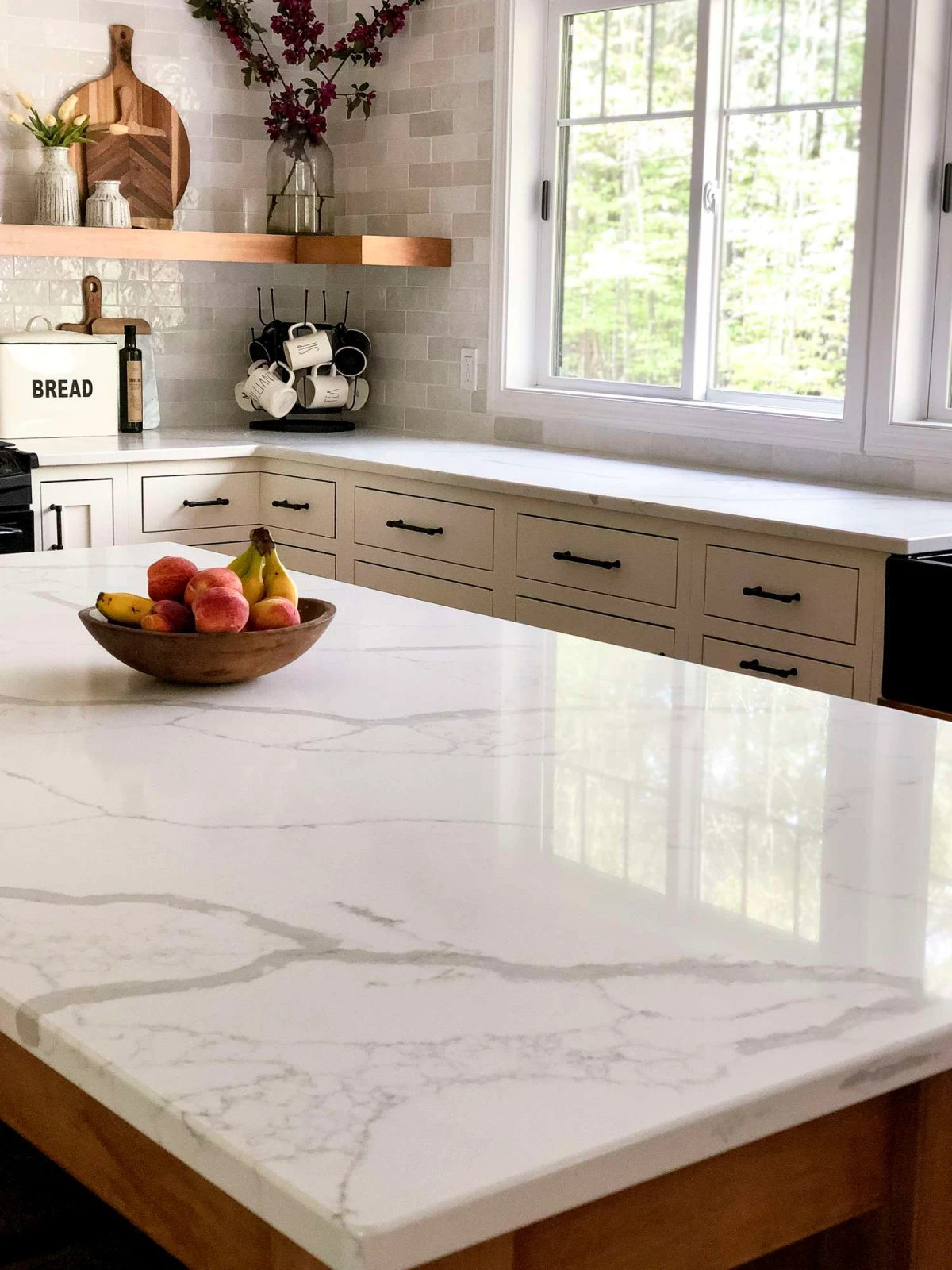
3. Quartz: The Engineered Performer
Engineered quartz has absolutely taken over the market, and now makes up a huge portion of our installations. It’s a man-made product that’s specifically designed to give you the look of natural stone without the maintenance headaches. For a lot of people, it’s the perfect solution.
How It’s Made
Just so we’re clear, quartz countertops aren’t a solid slab of stone dug out of a mountain. They’re made from about 90-95% crushed natural quartz crystals (one of the hardest minerals on earth) mixed with polymer resins and pigments. This slurry is poured into a mold, compressed under immense pressure, and baked. The result is a completely non-porous slab. No holes, no fissures, no need for sealing. Ever.
The One Critical Weakness: Heat
Here it is, my most important warning about quartz. Despite all its strengths, it is NOT as heat-resistant as granite. The resins that bind the stone together can scorch from high heat (usually above 300°F), leaving a permanent yellow or brown mark. I once saw a brand new, flawless quartz island ruined because the homeowner left a slow cooker running on it directly. It left a permanent, discolored ring. A hot pan can do the same thing, or worse, cause a crack from thermal shock.
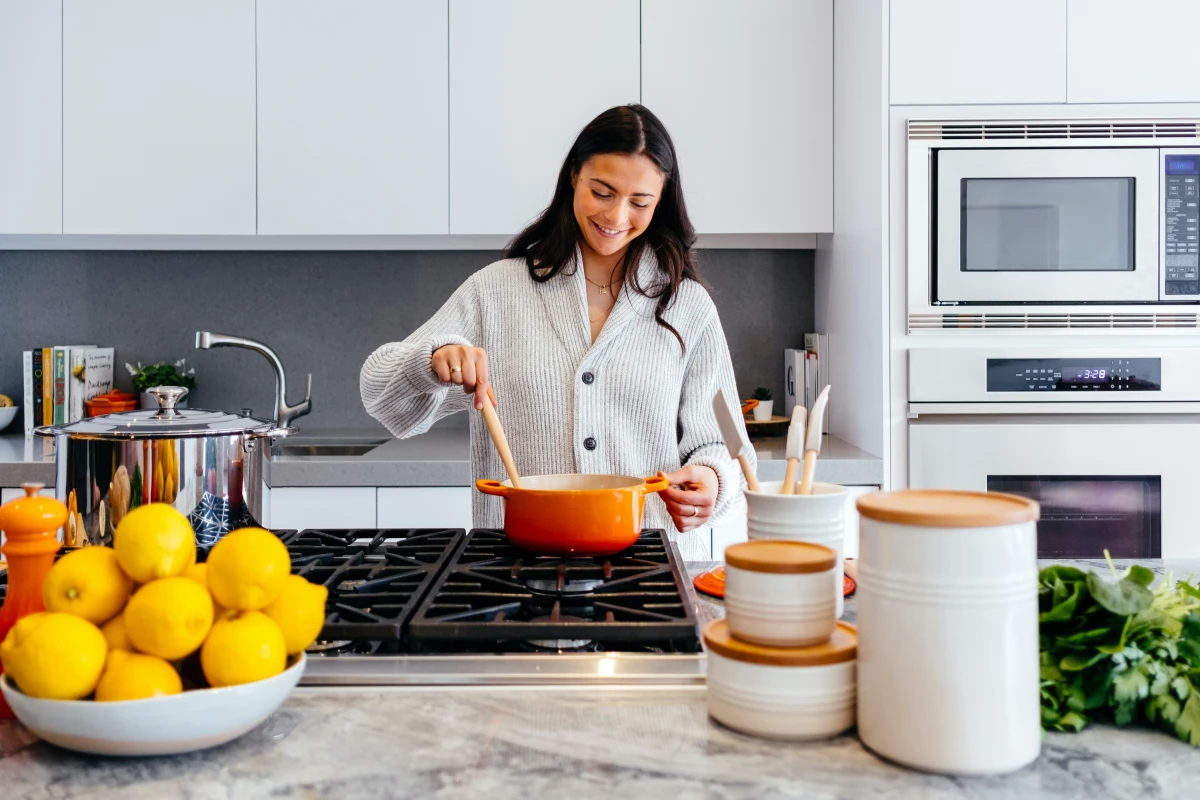
I tell every single quartz client the same thing: ALWAYS use trivets and hot pads. This is the golden rule. Ignoring it is the fastest way to ruin your beautiful new countertop. And to be frank, a scorch mark isn’t something that can be buffed out. It’s permanent.
The Upside: Cost and Consistency
Because quartz is manufactured, you get incredible consistency. The sample you see is exactly what you get. This makes seams in large kitchens nearly invisible. Pricing is also very competitive with natural stone, usually falling between $50 and $120 per square foot installed. Simple, solid colors are on the lower end, while complex designs that mimic marble are on the higher end.
Oh, and one more thing: because the resins can be damaged by UV light, quartz is not a good choice for outdoor kitchens.
- Best for: Busy people who want zero maintenance, anyone who prefers a consistent and uniform pattern, and families with kids.
- Worst for: Outdoor kitchens, and anyone who is forgetful with hot pots and pans.
4. Butcher Block: The Warm, Natural Choice
Nothing adds warmth and a cozy, inviting feel to a kitchen quite like wood. I often use butcher block on an island to create a beautiful focal point and a textural contrast to stone counters elsewhere in the room. It’s a fantastic material, but its success is all about the finish and proper care.
The Two Paths: Oil or Sealer
This is the most important decision you’ll make with a wood countertop. There are two ways to go:
1. Food-Safe Oil Finish: This is for the purist. You rub the wood with a mineral oil and beeswax blend every month or so. The oil soaks in and protects the wood from within. The huge benefit is that you can cut directly on it, and you can easily sand out any scratches or stains and just re-oil the spot. It’s a living finish.
2. Permanent Film Sealer: This is the low-maintenance route. You coat the wood with a durable, waterproof sealer like polyurethane. It creates a plastic-like film on top of the wood. It’s very protective against spills, but you CANNOT cut on it, as a knife will slice the finish. A deep scratch is also a much bigger deal to repair, often requiring you to sand down the whole countertop.
Installation and Cost Insights
Wood is a living material; it expands and contracts with humidity. It has to be installed in a way that allows for this movement, or it will warp or crack. Moisture is the ultimate enemy. A common DIY mistake is not sealing the sink cutout properly on all sides, which lets water seep in and cause rot.
Here’s my advice: if you’re putting a simple block on an island, a handy person can probably tackle it. But for a full kitchen with seams and a sink cutout, leave it to a pro. It’s worth the cost to avoid a disaster.
Speaking of cost, butcher block can be very budget-friendly. A standard maple or oak top might run you $30 to $70 per square foot for the material alone. Fancier woods like walnut or a true end-grain construction (the checkerboard pattern) will be more expensive, easily pushing past $100-$200 per square foot.
- Best for: Adding warmth and texture, creating a functional chopping surface (if oiled), and for budget-conscious renovations.
- Worst for: Around a sink if not installed and sealed flawlessly, or for someone who wants a completely hands-off surface.
Final Questions Before You Buy
Choosing a countertop is a balancing act. Before you fall in love with a look, have an honest conversation with yourself. Are you a passionate cook or do you mostly order takeout? Do you have kids who are guaranteed to make messes? How much maintenance are you really willing to do?
Finding a good fabricator is just as important as the material. A true pro will guide you. Before you commit, here are a few questions you should absolutely ask them:
- Do you use digital laser templating for a precise fit?
- Can I see and approve the slab and the layout of my countertops, especially where the seams will be?
- What is your estimated timeline from the day you template to the final installation day?
- Does your quote include the removal and disposal of my old countertops?
- Are there any extra charges for faucet holes or a specific edge profile?
A great countertop becomes the heart of your kitchen, the backdrop for countless memories. Choose wisely, and it’s an investment you will truly never regret.
Inspirational Gallery
Quartz: This is an engineered product, made from about 90-95% ground natural quartz and polymer resins. This makes it non-porous and highly resistant to stains and scratches without needing a sealer.
Quartzite: This is a 100% natural metamorphic rock. It’s often harder than granite but, being a natural stone, it is porous and must be sealed periodically to prevent staining.
While their names are confusingly similar, their maintenance needs are world’s apart. Always clarify with your fabricator which one you’re actually looking at.
The National Kitchen & Bath Association reports that matte and honed finishes are seeing a significant surge in demand, moving away from the high-gloss look that dominated for years.
This shift is all about hiding fingerprints and reducing glare. A honed finish offers a soft, velvety texture that feels modern and subtle. It’s a practical choice for busy kitchens, though it can be slightly more susceptible to showing oil marks than its polished counterpart. A quick wipe is usually all it takes to restore its beauty.
Don’t just trust the showroom sample. Take it home and put it to the test. A small tile can tell you a lot about how you’ll live with the material. Create a “stain station” on your sample with common kitchen culprits:
- A drop of red wine
- A smear of olive oil
- A small puddle of coffee
- A squeeze of lemon juice (to test for etching on marble or limestone)
Let them sit for an hour, then clean them off. The result is your real-world preview.
What exactly is a “waterfall edge”?
It’s a design feature where the countertop material doesn’t end at the edge of the cabinet but continues vertically down the side to the floor, creating a continuous flow. It’s a high-impact, luxurious look, especially with heavily veined stones like Calacatta marble or dramatic quartz patterns. Keep in mind that this seamless effect requires a significant amount of extra material and expert fabrication for the mitered edge, which will increase the overall project cost considerably.
When you see a stunning slab of veined marble or quartzite, you’re only seeing half the picture. Ask your stone supplier about “bookmatching.”
- It involves cutting a block of stone into two adjoining slabs, like opening a book.
- When placed side-by-side, the two slabs mirror each other perfectly.
- The result is a symmetrical, artistic pattern that turns your island or backsplash into a unique work of art.
This is a premium option, but for a true statement piece, nothing else compares.
- It deepens the wood’s natural color, making the grain pop.
- It creates a hydrophobic surface that repels water.
- It keeps the wood from drying out and cracking over time.
The secret? A simple, regular application of food-grade mineral oil or a more permanent sealer like Waterlox. This small ritual is the key to a butcher block that looks better and better with age.
Beyond the surface material, think about how it will meet your sink. An undermount sink is installed from below, creating a seamless edge that makes it easy to wipe crumbs directly into the basin. A top-mount (or drop-in) sink has a visible lip that rests on the countertop. While often more budget-friendly, that lip can trap grime. Your choice affects the final price, as the polished cutout for an undermount sink requires more labor from the fabricator.
Some terrazzo and recycled glass countertops, like those from Vetrazzo, can contain up to 85% post-consumer recycled content.
This means the beautiful flecks of color in your countertop might be from old beer bottles, traffic light lenses, or architectural glass. It’s a choice that blends unique, jewel-like aesthetics with a genuinely compelling sustainability story, diverting tons of waste from landfills and turning it into a durable, conversation-starting surface.
For a truly unique and tactile experience, consider the ancient Moroccan plaster technique known as Tadelakt. Traditionally used in hammams and riads, this waterproof lime plaster creates a seamless, smooth, and subtly undulating surface. It has a soft, earthy feel, unlike the cold hardness of stone, and can be tinted to almost any color. It’s a specialist application but offers an organic, soulful alternative to conventional countertops.
A major budget saver: Don’t dismiss modern laminate. High-definition printing has transformed this material. Brands like Formica’s 180fx® series or Wilsonart® HD® offer incredibly realistic stone and wood patterns that mimic the look of granite or marble, right down to the texture. For a fraction of the cost, you get a durable, non-porous surface that is easy to install and requires zero special maintenance.

